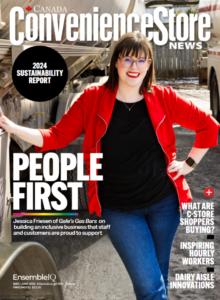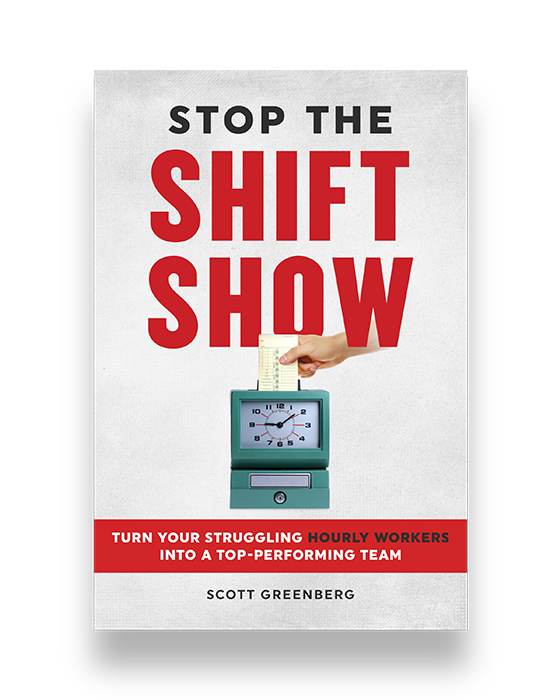Attracting and Retaining Customers and Employees Comes Down to These Two Skills
Ever heard a business owner say they’re in “the people business?”
As a hiring and retention keynote speaker, I hear it all the time. I make a living giving presentations to franchise systems, associations and corporations. I like to ask audience members to share with me what business they believe they’re in. Most people describe the thing they sell: “We’re in the automotive repair business” or “we provide software solutions.” Eventually, someone in the audience anticipates the answer they believe I’m looking for: “We’re in the people business.” Many will nod their head in agreement.
It’s a better answer, but still not good enough. Because what does that even mean?
Unlike computer networks that are driven by data, markets are driven by feelings. These feelings influence everything we do. How we spend money, where we spend money, how we work, how well we perform — all human behavior is informed by emotion. We still need stuff. We still need information. But it’s our feelings that most influence our choices. Behavioral economics is a whole field of study devoted to understanding this.
A typical business trades its offerings for money and considers the transaction complete. A “people business” works to make the transaction extra satisfying. That additional value breeds loyalty and retention. We like to be in business with others who make us feel good. Two types of skills are necessary to do this well:
Hard skills
These are the “how-to’s” of the business. We need tactics and tools. We need to continuously improve our products, processes and profitability. We need to increase our knowledge and ability to perform all the functions of the business. These are essential to operate and remain competitive.
What I’ve learned from my clients is that hard skills alone aren’t enough. In every system I work with, I meet some operators who are thriving and others barely surviving — all running the same or similar business. Many mistakenly chalk up the difference to location. But invariably the struggling locations give up and sell to higher performers who quickly turn the struggling locations around. Others think higher performers have better sales tactics or are doing more marketing. These hard-skills strategies make a difference, but they’re not the true difference-maker.
Soft skills
What does distinguish the higher performers is their soft skills? They manage themselves as well as they manage the business. They control their thoughts. They check their emotions. They communicate well. They understand that they’re in a people business, and they’re one of the people. I wrote a whole book about the differences between typical franchisees and whom I call “wealthy franchisees.” The best franchisees work hard and have decent locations, but it’s their mastery of soft skills infused into their daily operations that gives them their edge. I’ve observed this same dynamic among association members and even personnel within the same companies. Those with stronger soft skills combined with good hard skills will always outperform those with hard skills alone.
Among the many important soft skills needed for business excellence is resilience. This is one’s ability to continue marching forward when it feels like the universe is pushing back. Business is tough. Business owners need to be tougher. Resilience will also make it easier to discover new opportunities buried beneath the unpleasantness. It took a global pandemic to get some restaurants to pivot more toward delivery and digital ordering. For many, these new offerings have yielded recording-breaking revenue. Resilience reveals both solutions and opportunities. (See my recent TEDx talk about the connection between adversity and opportunity.)
With a stronger set of soft skills, you’ll be able to understand how your customers and employees — who are also part of “the people business” — need help at two similar levels.
Hard needs
These are the needs people have on the surface. They’re the things people consciously pursue. For consumers, it’s the products or services they seek, such as an oil change or a new point-of-sale system. It’s the food they order from a restaurant. It’s the adjustment they get from a chiropractor. Hard needs are tangible items exchanged in a marketplace. It’s what people consume.
For employees, hard needs are their compensation. That includes a salary, benefits, discounts and other perks. In times like these when most employers are desperate for more help, most are attempting to lure and keep employees by offering more hard-needs compensation, such as increased wages and signing bonuses.
But just as hard skills aren’t enough to drive high performance, fulfilling hard needs alone isn’t enough to satisfy customers and retain employees. They need something more.
Soft needs
These are the emotions we humans want to feel as we satisfy our hard needs. A true people business never forgets the human aspect of the operation. An exchange of goods is a transaction. When people are involved, there’s an interaction. That human encounter is where feelings are most impacted, one way or another.
Customers don’t usually request help with their soft needs. But deep down there’s always a subconscious desire, something they want to feel when they patronize a business. A group of teens going out for pizza probably wants to have fun. A couple celebrating an anniversary at a fancy restaurant probably wants to feel pampered. Consider what you want to feel when you go to a mechanic (trust), a hair salon (confidence), or a rock concert (excitement/community). Often, it’s a very small, subtle thing. But every business can find nuanced ways to make customers feel just a little better. People businesses pay attention to what matters to their customers emotionally and find ways to satisfy those emotions. Because customers remember less what they get (hard needs) and more about how they feel (soft needs).
This is also true for your team members. The biggest current pain point for my clients is staffing. And not just finding workers but understanding them. Every generation is different, but today’s young workforce is like no other that has come before. Their values, their expectations, and their behavior have got employers scratching their heads. I’m constantly hearing about ghosting, entitlement, and a lack of loyalty.
No one is certain about what the solution is to the current labor shortage. But I’m certain it’s going to take more than a hard needs approach. For better or worse, employers are going to have to understand and accommodate the workforce’s soft needs. Because they don’t just want more money. They also want to feel appreciated. They want to feel connected to co-workers. They want life balance and flexibility. They’ve wanted these things for a while. And not just today’s young workers.
Organizations such as Gallup have been reporting slumps in employee engagement long before the pandemic. According to their most recent survey, “fewer than one in four of U.S. employees felt strongly that their organization cares about their wellbeing. This is the lowest percentage reported in nearly a decade.” As hard needs compensation has increased in the workplace, there’s been a decrease in the fulfillment of soft needs.
Some of my audience members roll their eyes when I discuss the soft needs of today’s employees. They literally say, “They seem so soft!” I can understand their observation and frustration. And I don’t necessarily disagree. But at some point, to have a constructive conversation about being in the people business in today’s climate, we need to temper that frustration (which requires soft skills) and replace it with open-mindedness and a willingness to adapt. For better or worse, the workplace of the future must be less judgmental and more accommodating. Employers will have to meet the soft needs of the people they intend to employ. If not, they won’t be able to employ anyone.
Perhaps this will be good. I’m a parent of two teenagers who’ll be in the workforce before too long. It encourages me to think that maybe work won’t have to be something they endure. I want them to feel excited by what they do, to feel safe in the workplace, to respect and be respected. I want them to like working. And if they, as a generation, through their own soft ways, force employers to create better, safer, more pleasant work environments, then good on them for making that happen. I don’t want to have to loan my kids money, but I also want them to be happy. I hope they work (or start) true people businesses that meet both their hard and soft needs.
I’m also trying to help them understand that employers also have soft needs. They want to feel stable and secure. They want teams they can rely on. They need dependability and follow-through. Everyone deserves to have their soft needs met. To advance in their careers, workers will have to understand this. They, too, will have to work to elevate the emotions of those who rely upon them. I hope my kids play their part. They better — because while I’ll always be there to help with their soft needs when it comes to hard needs (i.e., money), I’ve already done my part. They better bring value to the workplace or they’ve got rough times ahead. Soft needs are important, but so are paying rent and eating.
Being in the “people business” means you’re in the feelings business. Everything you do must elevate the emotions of everyone your business touches, including yourself. It’s difficult when you’re busy. But investing a little more energy in the emotional payoff of your business might be the best way to achieve a financial one.
[A version of this article originally appeared here in Entrepreneur]
For more information about Hiring & Retention Keynote Speaker, Scott Greenberg, please call 520-548-1160 or contact us through this website.




